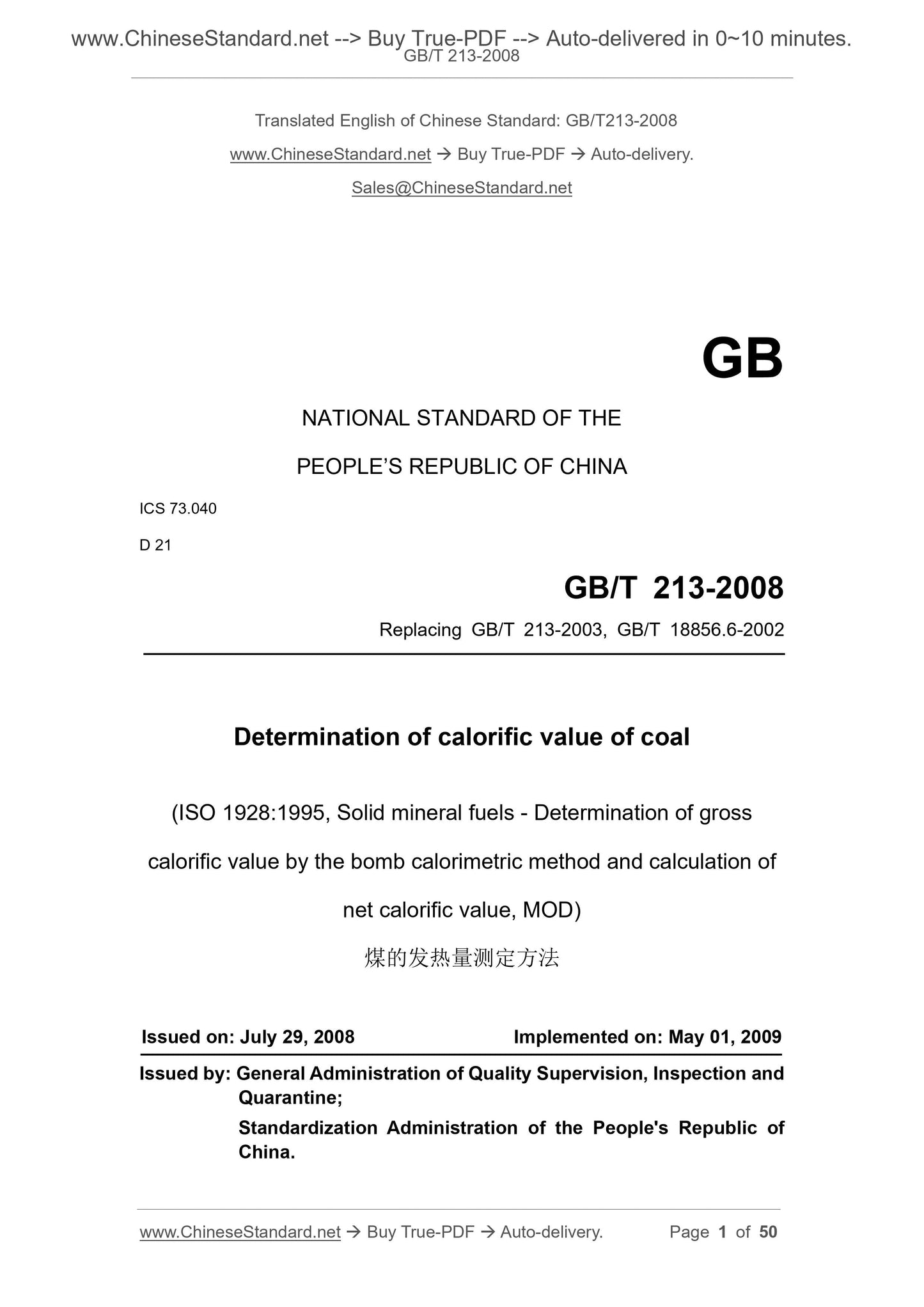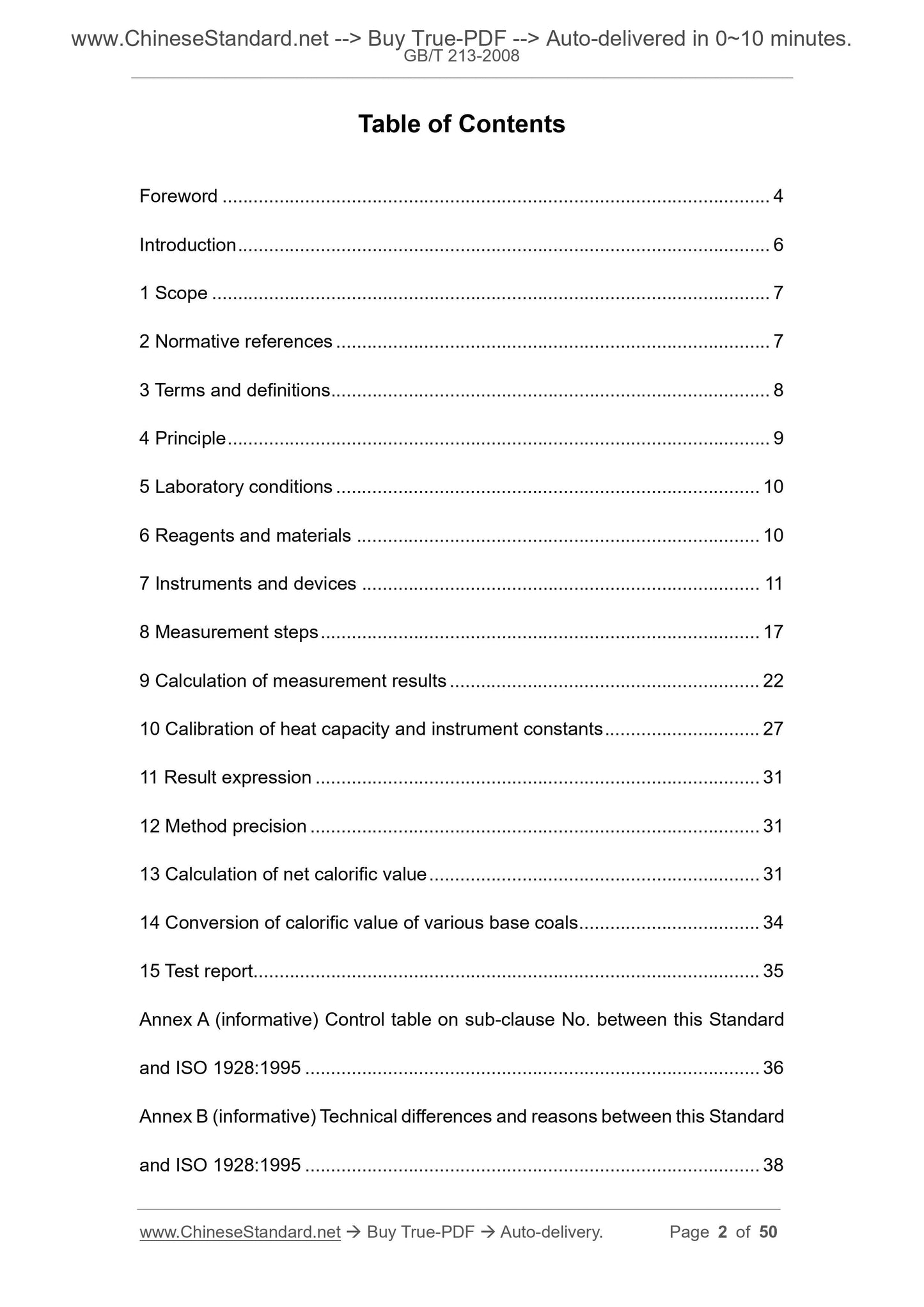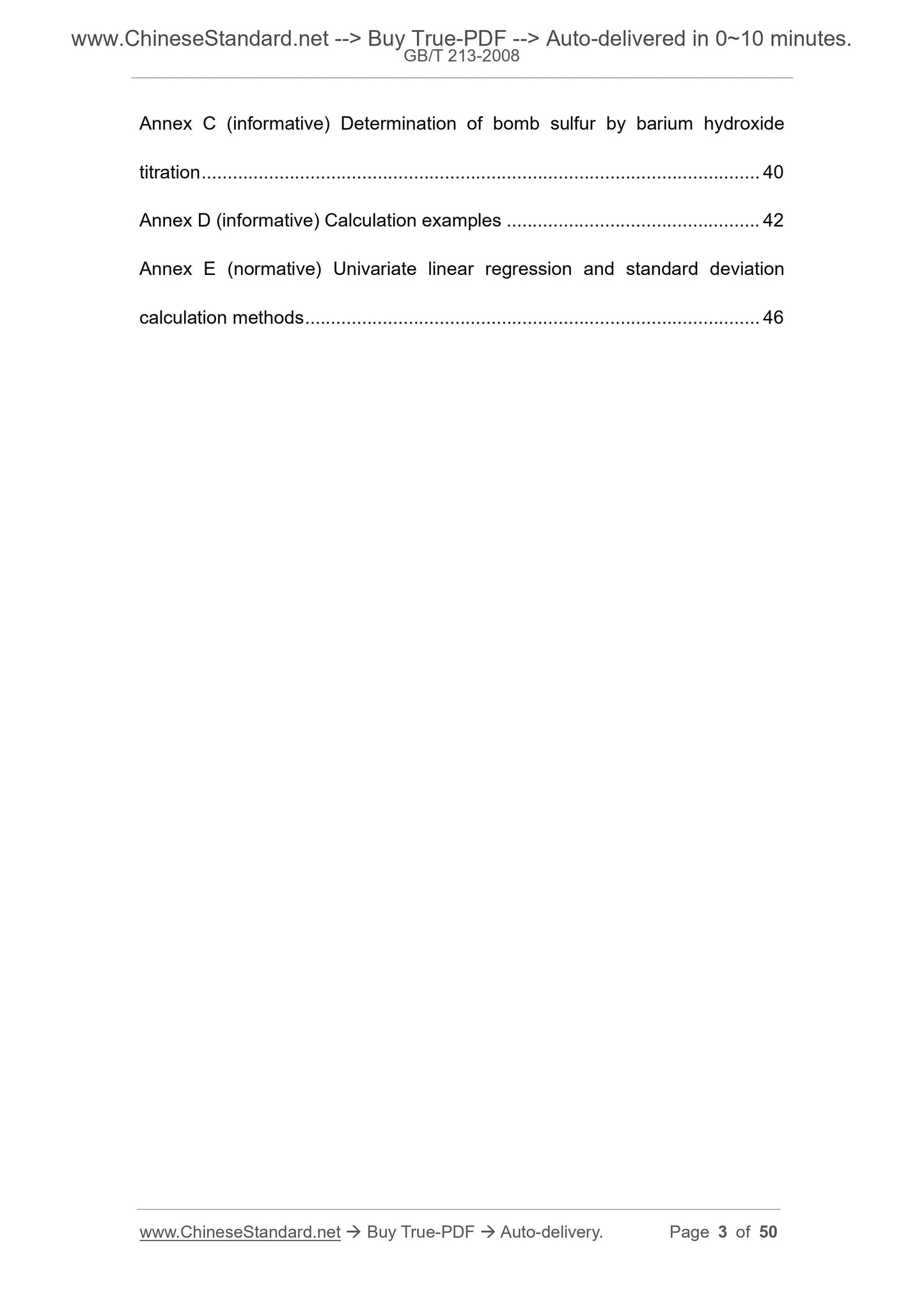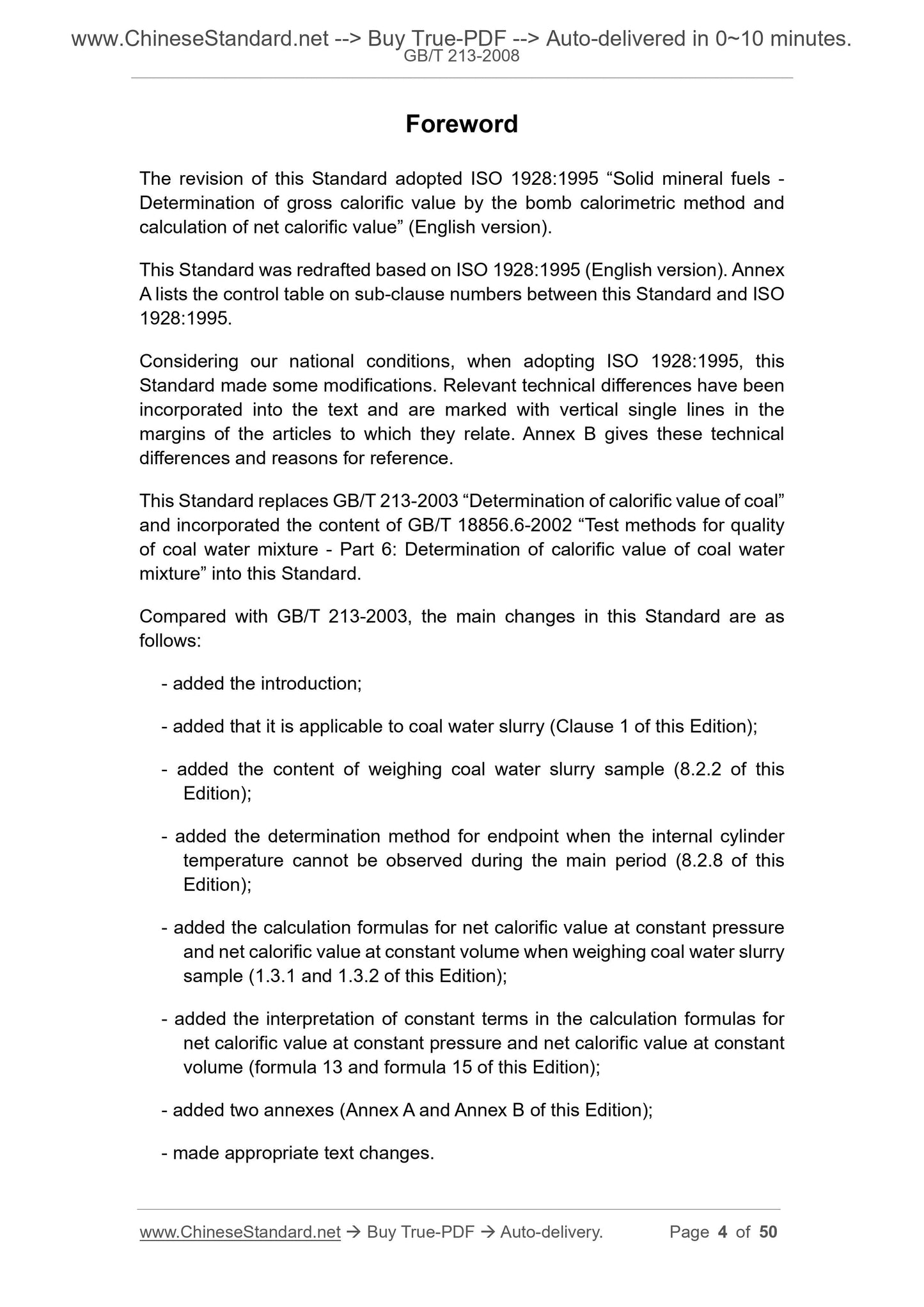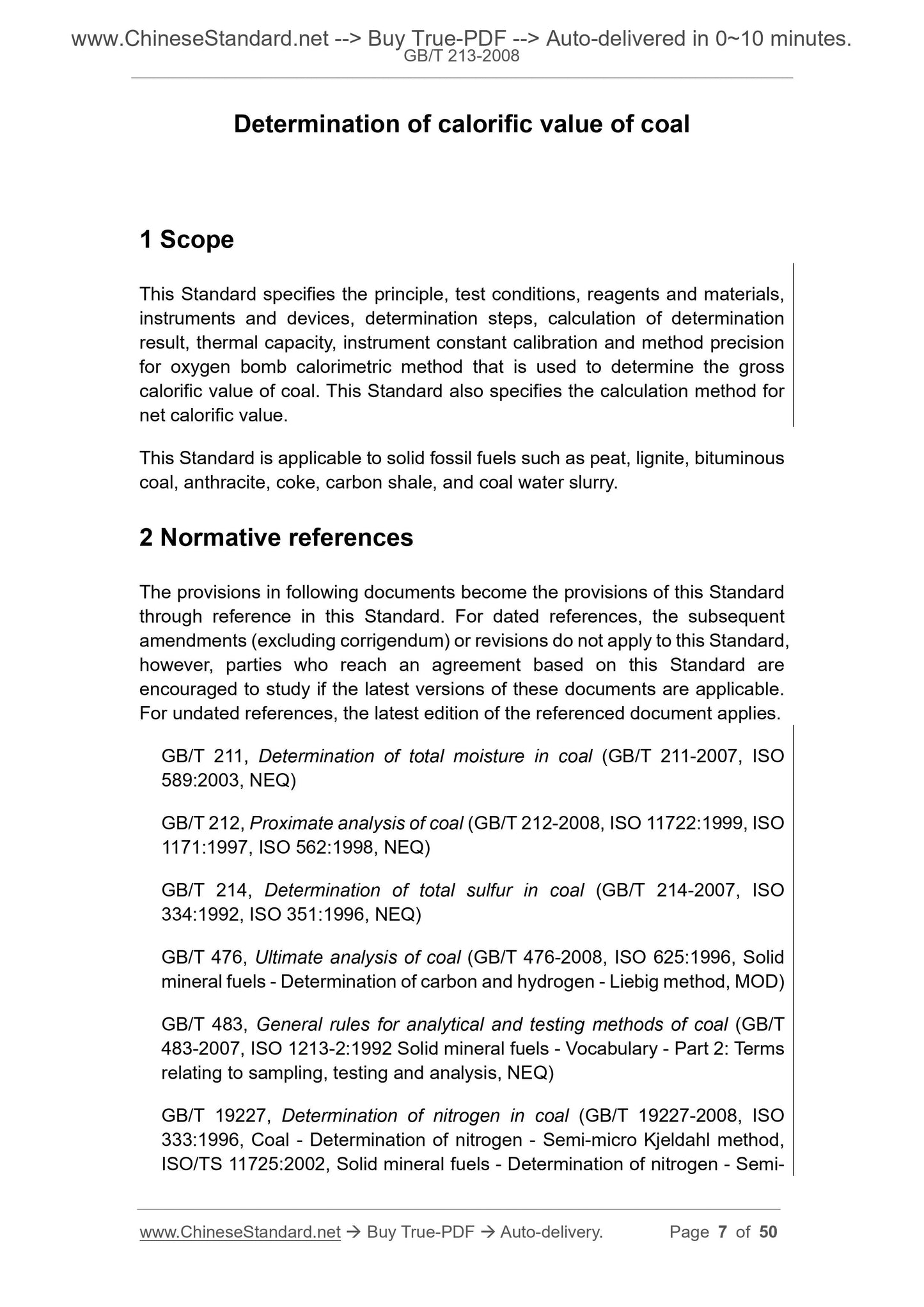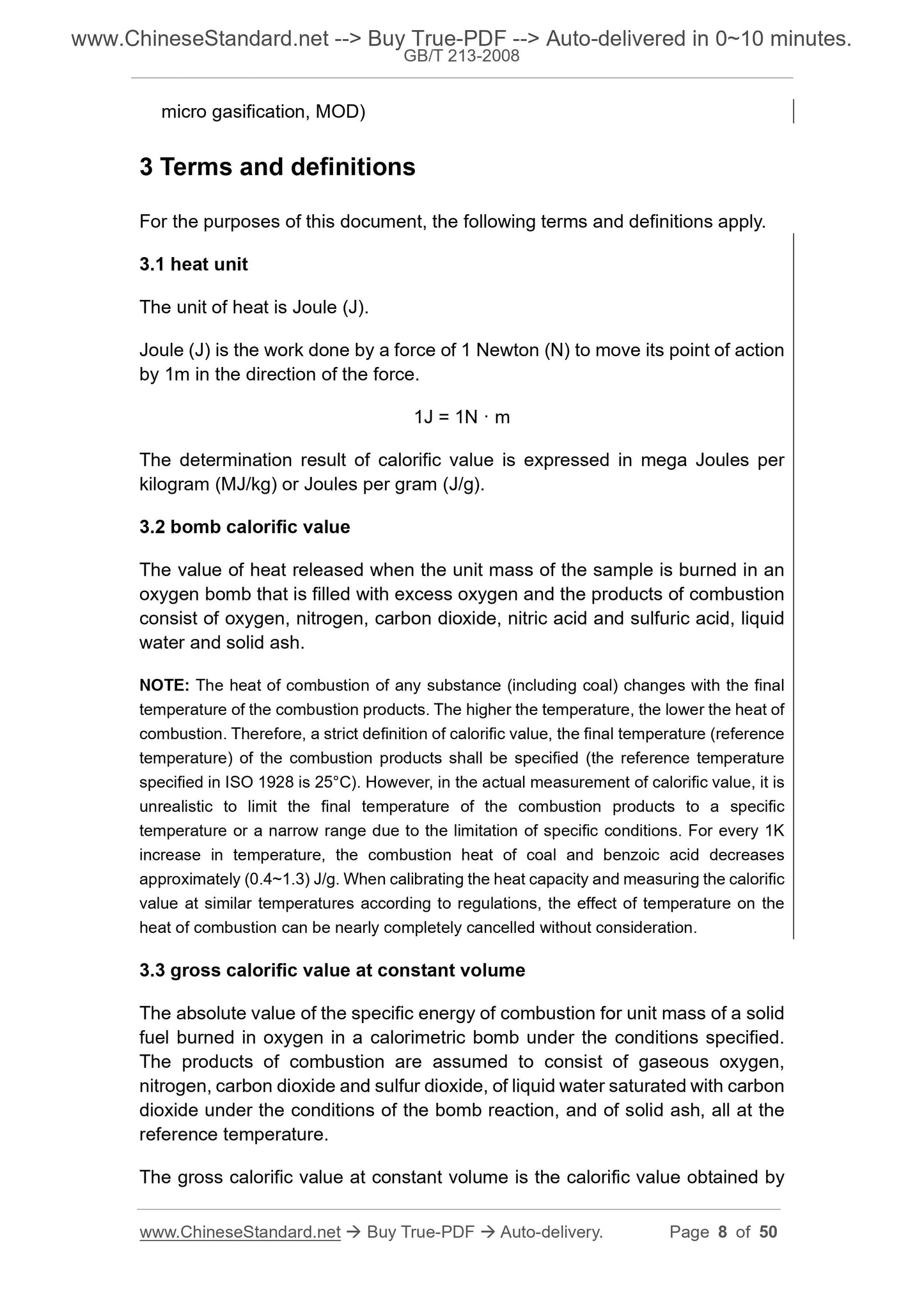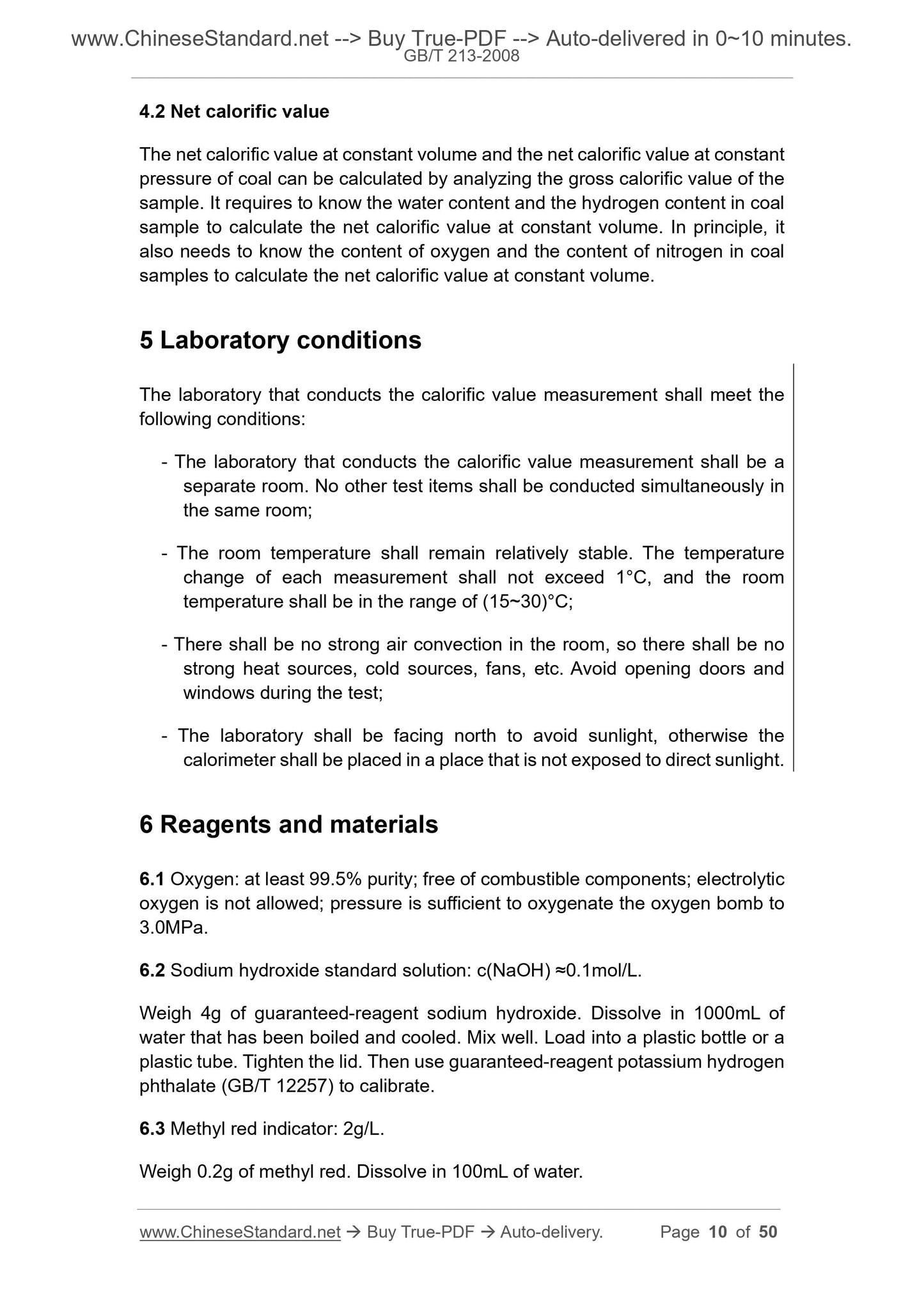1
/
of
7
www.ChineseStandard.us -- Field Test Asia Pte. Ltd.
GB/T 213-2008 English PDF (GB/T213-2008)
GB/T 213-2008 English PDF (GB/T213-2008)
Regular price
$195.00
Regular price
Sale price
$195.00
Unit price
/
per
Shipping calculated at checkout.
Couldn't load pickup availability
GB/T 213-2008: Determination of calorific value of coal
Delivery: 9 seconds. Download (and Email) true-PDF + Invoice.Get Quotation: Click GB/T 213-2008 (Self-service in 1-minute)
Newer / historical versions: GB/T 213-2008
Preview True-PDF
Scope
This Standard specifies the principle, test conditions, reagents and materials,instruments and devices, determination steps, calculation of determination
result, thermal capacity, instrument constant calibration and method precision
for oxygen bomb calorimetric method that is used to determine the gross
calorific value of coal. This Standard also specifies the calculation method for
net calorific value.
This Standard is applicable to solid fossil fuels such as peat, lignite, bituminous
coal, anthracite, coke, carbon shale, and coal water slurry.
Basic Data
| Standard ID | GB/T 213-2008 (GB/T213-2008) |
| Description (Translated English) | Determination of calorific value of coal |
| Sector / Industry | National Standard (Recommended) |
| Classification of Chinese Standard | D21 |
| Classification of International Standard | 73.040 |
| Word Count Estimation | 28,223 |
| Date of Issue | 2008-07-29 |
| Date of Implementation | 2009-05-01 |
| Older Standard (superseded by this standard) | GB/T 213-2003; GB/T 18856.6-2002 |
| Quoted Standard | GB/T 211; GB/T 212; GB/T 214; GB/T 476; GB/T 483; GB/T 19227 |
| Adopted Standard | ISO 1928-1995, MOD |
| Regulation (derived from) | National Standard Approval Announcement 2008 No.12 (Total No.125) |
| Issuing agency(ies) | General Administration of Quality Supervision, Inspection and Quarantine of the People's Republic of China, Standardization Administration of the People's Republic of China |
| Summary | This standard specifies the principles of measuring high calorific value of coal with oxygen bomb calorimetry, experimental conditions, reagents and materials, equipment, measuring step, calculated measurement results, thermal capacity, instrument constant calibration and precision of the method, as well as low calculation Methods of heat. This standard applies to peat, lignite, bituminous coal, anthracite, coke, solid carbonaceous shale and other fossil fuels and coal slurry. |
Share
